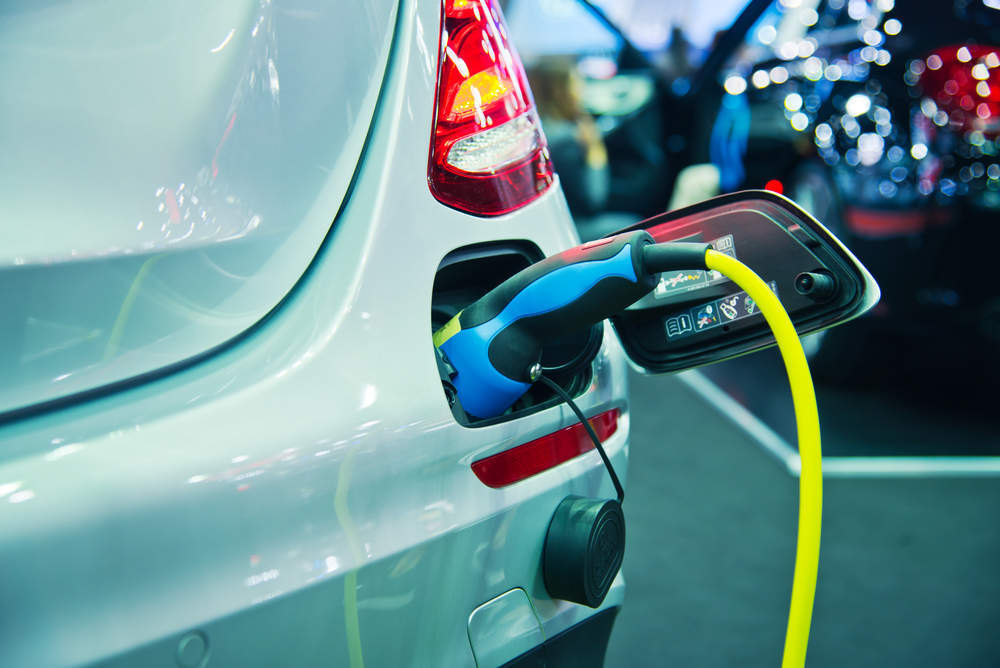
Sales of electric vehicles have been growing steadily for the last few years, but when will electric cars take over? It could be “pretty quickly over the next 20 years”, according to the technical director of Williams Advanced Engineering (WAE) Paul McNamara.
With the average passenger vehicle emitting about 4.6 metric tons of carbon dioxide per year, electric cars have become increasingly important to reducing CO² emissions. Even when electricity is provided by the most carbon-intensive energy, electric cars have been found to emit 50% less greenhouse gas than diesel.
WAE, an offshoot of the Williams Formula One brand, applies cutting-edge F1 technologies to a range of industries. Through this application, it aims to solve some of society’s big technical problems—including electric cars.
“We’re trying to project that this Formula One technology does good things in society in general,” said McNamara.
WAE’s cross-industry projects include lightweight materials, aerodynamics and hybrid power systems. But it is using innovation to ensure the UK’s cars and road infrastructure are electrified that excites McNamara most.
“As an engineer I’m quite pragmatic about the world, so I think we’re focused—and I’m very focused—on electrification and CO² as a theme.”
How well do you really know your competitors?
Access the most comprehensive Company Profiles on the market, powered by GlobalData. Save hours of research. Gain competitive edge.

Thank you!
Your download email will arrive shortly
Not ready to buy yet? Download a free sample
We are confident about the unique quality of our Company Profiles. However, we want you to make the most beneficial decision for your business, so we offer a free sample that you can download by submitting the below form
By GlobalDataFigures show that UK electric car sales have risen dramatically over the past few years. In the first half of 2014 only around 500 cars were registered per month; in 2018 that number rose to an average of nearly 4,500 per month.

But while electric car registrations have been increasing, they still remain at just 2.6% of total car registrations. McNamara believes the electrification of the UK’s roads can be achieved in the next 20 years with three steps.
When will electric cars take over? It’s all about attractive and practical products
For McNamara, it all starts with aesthetics and pragmatism:
“The first step is attractive products that are workable in people’s lives.”
This means that luxury electric car brands such as Tesla will not be—in McNamara’s opinion—the main drivers behind the electric car revolution.
He believes that the Jaguar I-Pace is an example of a car that can be both practical “and attractive”. The electric car has a starting price of around £63,000 and a maximum range of nearly 300 miles. Its 398 brake horsepower and zero to 60 pace of 4.5 seconds means that it can compete directly with the likes of Tesla.
At the lower end of the price scale, there’s the Nissan Leaf, which McNamara believes is “starting to get practical”. It has a maximum range of about 175 miles and a price tag of £27,235. However, its top speed of 89mph and its zero to 60 speed of 8 seconds puts it behind the Jaguar I-Pace’s specs.
Elsewhere, cars such as the Volkswagen e-Up, the Renault Zoe and BMW i3 have all been well-received. As the designs become more practical—such as the large boot offered in the Renault Zoe—the uptake of electric cars will continue to increase.
It all depends on the infrastructure
As demand grows, infrastructure will need to be improved and expanded. Initially, residential parking will be able to meet the charging demands of electric cars. With 48% of the population having access to off road parking, McNamara believes overnight charging is “realistic”.
Critics of electric cars fear that the national grid will not be able to generate enough power for the extra demand created by electric vehicles. However, many experts believe that the problem is less about capacity, but more about local network infrastructure. This is a point that McNamara agrees with.
“There’s a local infrastructure problem at the moment with getting all of that electricity over one period overnight,” he said.
For longer journeys, electric car users rely on public charging ports. While there is some existing infrastructure, such as the Tesla superchargers along the M40, more need to be rolled out. This will likely see a continuing increase in the number of hybrid fuel stations, with petrol pumps and charging points operating side-by-side.
Critics have also drawn attention to the lengthier charging times of electric vehicles, which typically takes between six and eight hours. McNamara, however, is confident that the technology will continue to improve to bring this time down.
“I think what’s going to happen is the products and the infrastructure will get to a stage where you’re talking half an hour,” he said. “That means it’s a sort of slightly extended coffee stop.”
When will electric cars take over? Attitudes will need to change
Spending longer at the fuel station will require a change in attitude for road users. Drivers will have to get used to lower ranges, longer fuelling times and better journey planning.
“I think one of the interesting things that’s going to happen over the next couple of decades is how people start to react to the car as it becomes electric, in terms of how their life fits around it, and whether you start to think ‘well I don’t need the range’,” said McNamara.
Conventional cars are currently capable of 500-600 mile ranges. Critics of electric vehicles are quick to point out that most electric cars only offer around half of that from one full charge. McNamara, though, insists the longer range is merely an “accident of the 1980s”.
“If you went to buy a car in the 1980s every new car was 250 miles pretty much,” he said. “What then started happening is everyone started worrying about fuel economy.”
As fuel economy improved the range, the fuel tanks remained the same size because manufacturers didn’t want to change them. When diesel took off, the range jumped up to 500 miles.
“It’s only in the last 30 years we’ve had any concept of anything over 250,” said McNamara. “So we might all drift back to 250 as a number because you’re filling up every morning.”
WAE may not be working in the driverless car space, but McNamara believes the technology will eventually help cut CO² emissions as there will be fewer cars on the roads.
“But right now the challenge in front of us is, at least with cars, that we can electrify pretty quickly I think over the next 20 years.”






